Mr. Jerry Rauenzahn has been perfecting his full-spliced cues for nearly 4 years now with sharp points on top and the lower return points. He has also done many repairs on Brunswick 360's including some work on a couple of mine. We have joked over the years about making a 180 version before building a true 360. Well, Mr. Jerry just sent me a couple of pics of his first prototype soon to be sent my way. Here's a little info on the original early 360's Brunswick built along with personal dialogue from Jerry from our conversations and emails.
"Hi John,
I used straight grain maple on the forearm, Cocobolo in the middle section, and Hondurous Rosewood on the rear section. I used only three b/flys and these woods because I wasn't sure if the first attempt would yield a usable cue. On this first attempt I wasn't sure if the Points where too deep or not deep enough especially in the mid section. As it turned out this butt is very usable.
On The front section the B/flys are really close in height however the mid section varies about 3/8 ". No problem, I Know how to improve on them with the next 360 butt."
"This proto type -R- 360 cue has a normal size joint = .840" instead of the .760" - .790" so it will be a player instead of a "Closet Queen."
Bogey / Chris Grader posted on AZ like three years ago early /09 when I made my first full Splice that in my bucket list that Jerry-R- wanted to make a copy of the brunswick 360.
I lost a lot of sleep over point locations, points and butterflies being long enough, deep enough, and how long each section should be, mind boggling to say the least. Also changing my old machines and cutters to fit the different thicknesses when adding points or butterflies, and especially the angles of the points. When Berger (a Frenchman working for Brunswick at the turn of the century) "the originator of this style of points and butterflies" Hence "Berger Points," worked for Brunswick he probably had machines set up for each segment of the 360, but for a one man operation I needed to change my machines for each section.
If a person wanted to copy the most intricate CNC decorated cue in the world he would need to make up a program to match each inlay and its location and with a lot of patience it could be done.
But making a copy of the Brunswick 360, CNC is not that helpful. It takes trial and error plus a big scrap pile and a crafty patient person to make a reasonable copy of the Berger style 360.
Also My hat is off to Mr. Berger, I love to look at his old Brunswick 360s.
Your Friend
Jerry-R-"
I wanted the bigger 0.840" joint which would still look fantastic and be a player which is what I was looking for. We discussed the pin location and decided on the butt side so it would last longer, and I could use my Predator shafts I've used for 14+ years.
Enjoy the pics in progress.
John
This was Jerry's first try at an -R- 180.
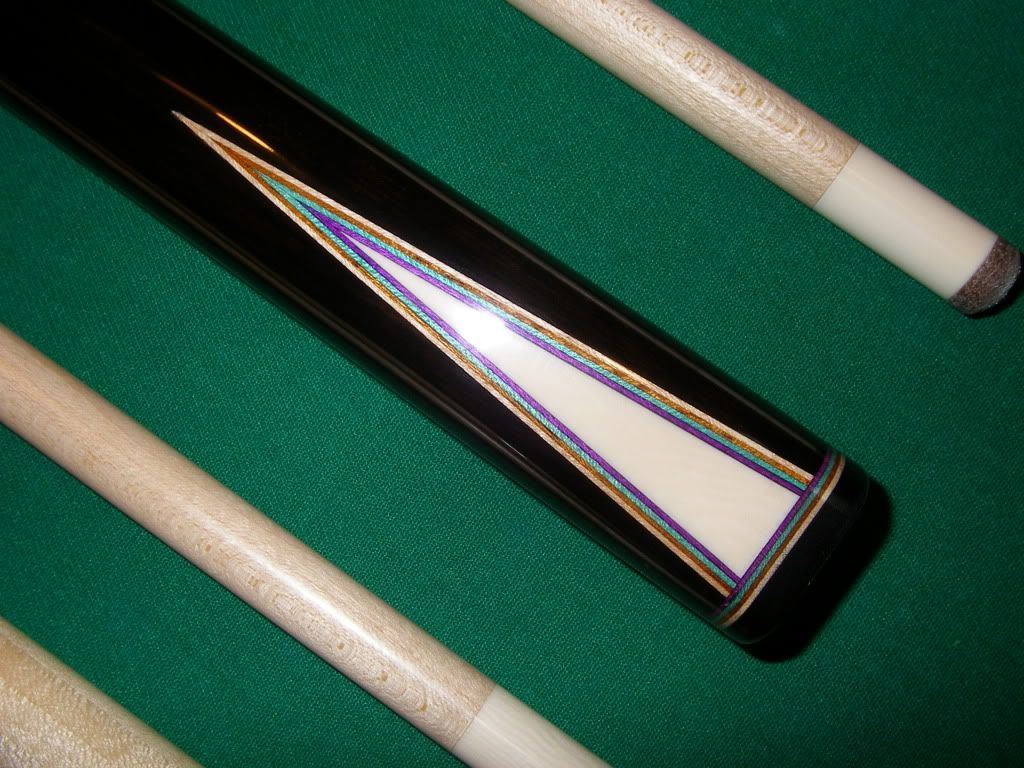
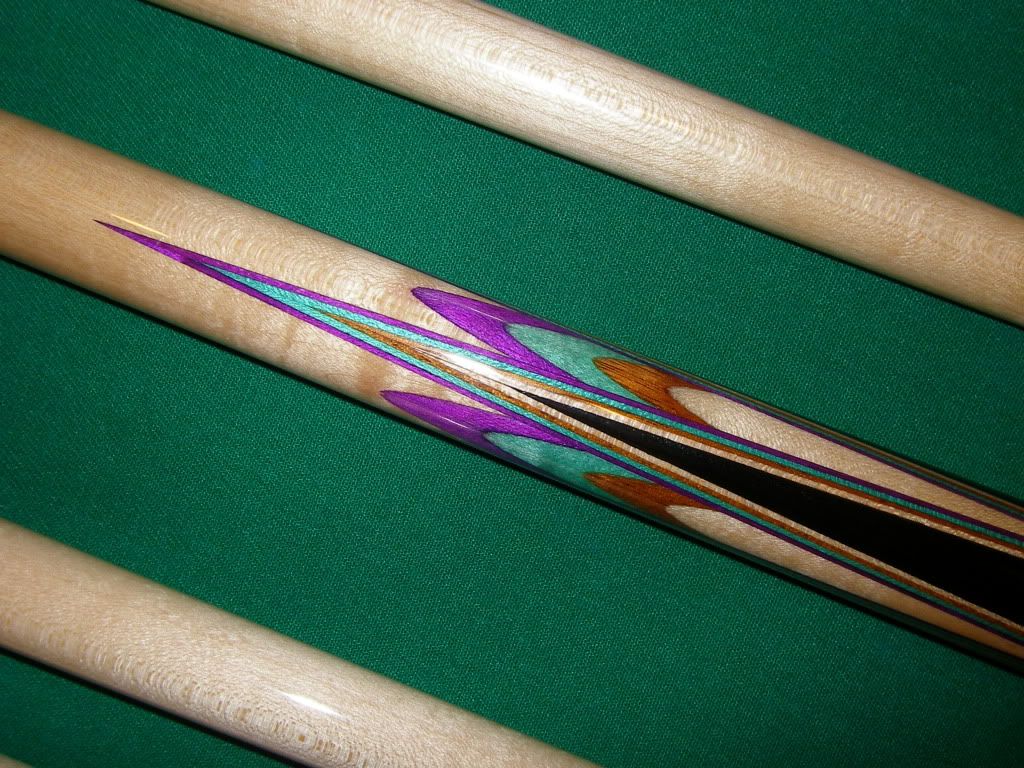
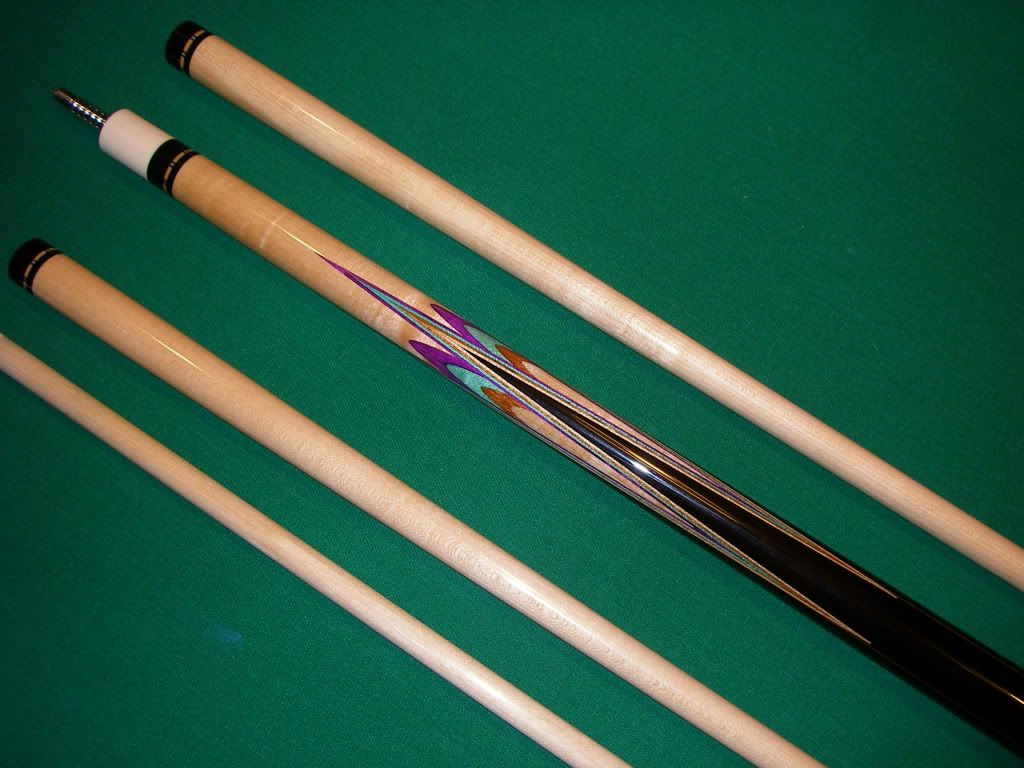

Here's the prototype -R- 360 in progress. When the cue is finished I will post more pics.
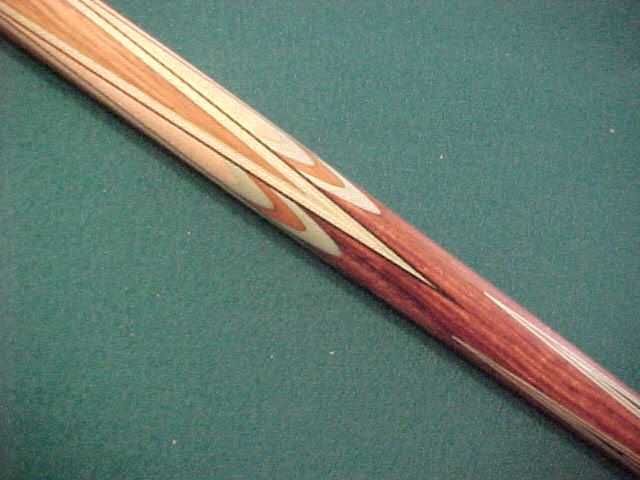
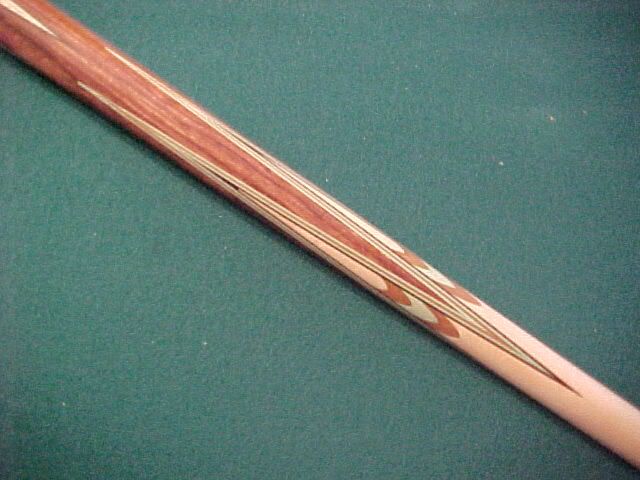
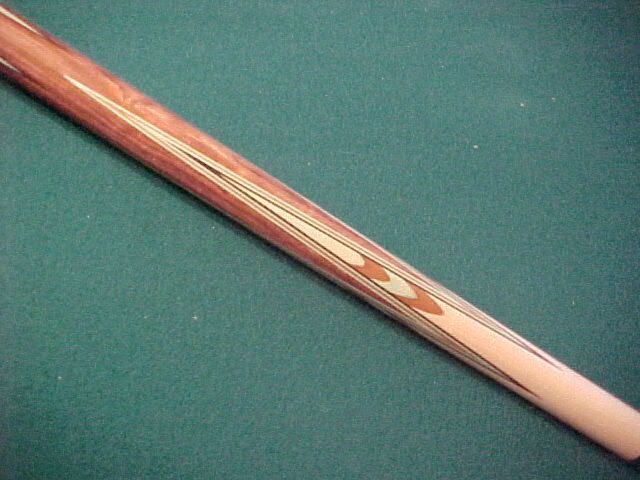
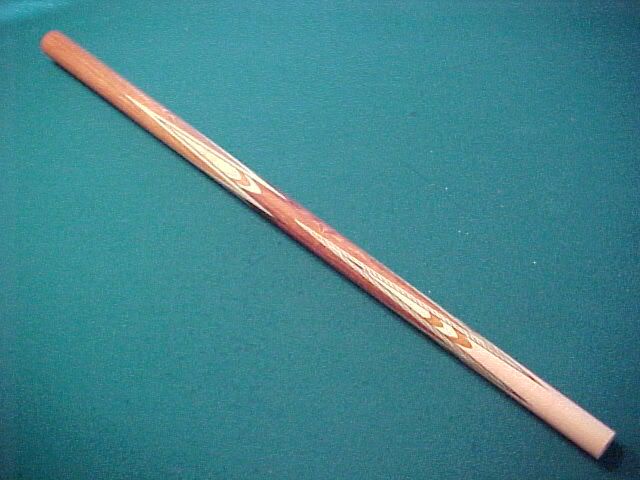


"Hi John,
I used straight grain maple on the forearm, Cocobolo in the middle section, and Hondurous Rosewood on the rear section. I used only three b/flys and these woods because I wasn't sure if the first attempt would yield a usable cue. On this first attempt I wasn't sure if the Points where too deep or not deep enough especially in the mid section. As it turned out this butt is very usable.
On The front section the B/flys are really close in height however the mid section varies about 3/8 ". No problem, I Know how to improve on them with the next 360 butt."
"This proto type -R- 360 cue has a normal size joint = .840" instead of the .760" - .790" so it will be a player instead of a "Closet Queen."
Bogey / Chris Grader posted on AZ like three years ago early /09 when I made my first full Splice that in my bucket list that Jerry-R- wanted to make a copy of the brunswick 360.
I lost a lot of sleep over point locations, points and butterflies being long enough, deep enough, and how long each section should be, mind boggling to say the least. Also changing my old machines and cutters to fit the different thicknesses when adding points or butterflies, and especially the angles of the points. When Berger (a Frenchman working for Brunswick at the turn of the century) "the originator of this style of points and butterflies" Hence "Berger Points," worked for Brunswick he probably had machines set up for each segment of the 360, but for a one man operation I needed to change my machines for each section.
If a person wanted to copy the most intricate CNC decorated cue in the world he would need to make up a program to match each inlay and its location and with a lot of patience it could be done.
But making a copy of the Brunswick 360, CNC is not that helpful. It takes trial and error plus a big scrap pile and a crafty patient person to make a reasonable copy of the Berger style 360.
Also My hat is off to Mr. Berger, I love to look at his old Brunswick 360s.
Your Friend
Jerry-R-"
I wanted the bigger 0.840" joint which would still look fantastic and be a player which is what I was looking for. We discussed the pin location and decided on the butt side so it would last longer, and I could use my Predator shafts I've used for 14+ years.
Enjoy the pics in progress.
John
This was Jerry's first try at an -R- 180.




Here's the prototype -R- 360 in progress. When the cue is finished I will post more pics.






Last edited: